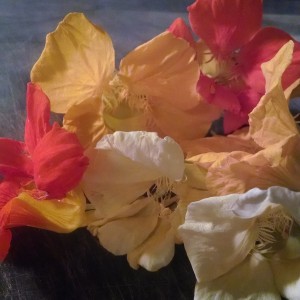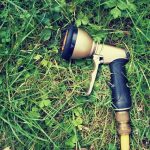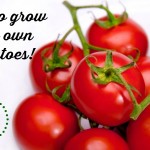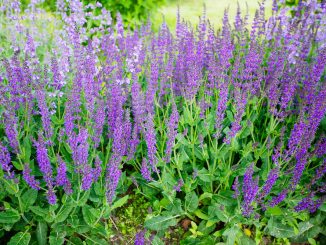By Tiffany Selvey, Master Gardener and mama of 1
Have you ever been to one of those fancy restaurants that serve you a plate of food too pretty to eat? Usually it includes a grain that’s shaped into a miracle of physics, topped with a piece of meat only found in one square mile in a small province of France, finished off with a vegetable floating on top and garnished with flowers. Flowers! On a plate! How impossibly elegant.
I can’t help you secure rare meat, nor do I understand the physics of food stacking, but I can help you grow edible flowers for food garnishes and cocktails. Like most herbs, these flowers actually prefer less fertile soils, so simply remove all weeds from existing soil and plant. Skip the fertilization.
- Borage– This flower is on nearly every list of flowers I write. Want to attract bees? Plant borage. Desire a wildflower garden? Again, borage. Edible flowers? Borage! This lovely plant grows to be about 2 ½ feet tall and makes a really pretty addition to a flower bed or vegetable garden. The leaves are also edible, and are often cooked like spinach, kale, turnip tops or any other greens. The delicate blooms can be frozen into ice cubes or used fresh to top salads or drinks. Growing borage is as simple as sprinkling seeds on the surface of prepared soil where all grass and weeds have been removed, then water gently. Borage reseeds itself freely, so if you plant it once, it will return for as long as you allow it to grow and bloom.
- Nasturtium– This is one of my favorite flowers, not only because it’s so functional but simply because it’s so pretty. Like borage, all the parts of of this plant are edible. The leaves are often added to fresh salads and the peppery blooms are often used as stunning garnishes on a plate. Even the seeds are pickled and eaten like capers. In the garden, nasturtiums planted beside squash deters squash bugs, making it useful on so many levels. Available in orange, red, white, pink and yellow, this flower works well as a potted plant for an edible addition to a patio. In prepared soil, plant seeds about an inch deep and water well.

Nasturtium blooms make an elegant addition to family dinner.
- Calendula– This bright orange bloom can be infused in oil to impart color, used whole as a plate garnish, or the petals can be scattered on top of soups or salads. At about 12 inches tall, calendula can be added to nearly any garden space to add a pop of color. Like borage, calendula will reseed itself freely, returning year after year. To plant calendula, space seeds about 6 inches apart, cover lightly with soil and water well.
Edible blooms are not just for fancy meals. Add them to lunch, lemonade or tea anytime you need a pick-me-up. Since you’re growing your own, it won’t cost you a thing to add these lovelies to your meal, but they will absolutely brighten your day.
Happy gardening!
Note from the mamas: If you’d like to have your edible flowers on top of some amazing home-grown tomatoes this summer, check out these two articles by our Master Gardener, Tiffany Selvey:
 Tiffany Selvey is a Master Gardener who writes about her passion for growing, cooking, and living naturally atwww.Songbird-Gardens.com. When she’s not elbow deep in soil, she enjoys raising a very active son, laughing with her husband, and wrangling their pets. Follow Tiffany’s gardening adventures on facebook , instagram and on twitter.
Tiffany Selvey is a Master Gardener who writes about her passion for growing, cooking, and living naturally atwww.Songbird-Gardens.com. When she’s not elbow deep in soil, she enjoys raising a very active son, laughing with her husband, and wrangling their pets. Follow Tiffany’s gardening adventures on facebook , instagram and on twitter.







